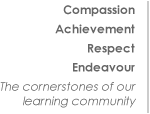

I'm a worm....get me out of here!
Mr R. LangstoneYear 7 Gifted and Talented Science pupils investigated Charles Darwin’s Theory of Evolution by Natural Selection as part of the Year of Darwin. They carried out an activity called ‘I’m a worm, get me out of here!’, looking at which colour worms are most adapted to survive in the wild and which colours would be eaten (become extinct). But don’t worry – no worms were harmed in the making of the project, it was just coloured spaghetti! Many thanks to the students for all their hard work and enthusiasm.by H. Grubb, Year 7 During the week commencing 7 December 2009, 25 students, (myself being one of them), took part in a week-long project named ‘I’m a Worm Get Me Out of Here!’, celebrating the 200th anniversary of one of our most famous scientists, Charles Darwin. We were going to have a crash course based on his work and set up an investigation based on some of his theories, then present our findings. The first day began in Science lab 32 with project leader Mr R. Langstone and his assistant Mrs P. Ford. First, Mr Langstone gave us the task of picking a subject on Charles Darwin and creating a presentation about it. Here are some facts we found out:- Charles Darwin was born in 1809 in Shrewsbury, Shropshire.- In 1831 he joined a five-year scientific expedition on the survey ship HMS Beagle.- In 1859, he published a book ‘On the Origin of Species by Means of Natural Selection’.We then learnt about Natural Selection, the basis of Darwin’s theory. Mrs Ford had set up an investigation using imaginary birds called Springbeaks, on two islands called Clippy Island North and Clippy Island South. This was to replicate the finches that Darwin studied on his journey to the Galapagos Islands. We started with two medium, two big and two small ‘beaks’ (different sized bulldog clips) and different types of beans (representing seeds), all of which varied in their calorie content. We had four rounds lasting 30 seconds each, in which time we had to collect as many beans as possible. How many calories you got determined whether you died, survived or survived and reproduced. Here are the results:- Smaller beaks (smaller birds), did well because they needed less calories to survive an reproduce. These then reproduced and flourished.- Larger sized beaks (larger birds), did poorly as they needed more calories just to survive and therefore eventually died out (became extinct)!This is the basis of natural selection – that is, if organisms are not adapted to their environment, they will not survive. Only those organisms capable of adapting to their environment survive and pass on their genes to the next generation.Finally, we set up the investigation. We wanted to investigate how the colour of a worm affected its survival. To represent the worms, we boiled pieces of spaghetti in different coloured water. We then laid them out in a metre square in the wildlife garden outside the lab and left them for 24 hours. The point of this was to see which colour the birds, (largely wood pigeons), preferred. We counted how many of each colour worms survived and re-set the investigation every day after school (except Friday).Then, on Friday, we had to do a presentation to our parents – scary!. Each group presented one aspect of what we learnt that week, including getting our parents up and pretending to be Springbeaks on Clippy Island!I had a brilliant time and learnt a lot of new things!

